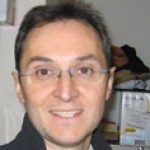Link to Pubmed [PMID] – 18604572
Neurogenetics 2008 Oct;9(4):237-48
Small-conductance Ca(2+)-activated potassium (SK) channels are heteromeric complexes of SK alpha-subunits and calmodulin that modulate membrane excitability, are responsible for part of the after-hyperpolarization (AHP) following action potentials, and thus control the firing patterns and excitability of most central neurons. An engineered knockout allele for the SK2 subunit has previously been reported. The hippocampal neurons of these mice lacked the medium latency component of the AHP, but the animals were not described as presenting any overt behavioral phenotype. In this report, we describe a deletion in the 5′ region of the Kcnn2 gene encoding the SK2 subunit in the mouse neurological frissonnant (fri) mutant. The frissonnant mutant phenotype is characterized by constant rapid tremor and locomotor instability. It has been suggested, based merely on its phenotype, as a potential model for human Parkinson disease. We used a positional cloning strategy to identify the mutation underlying the frissonnant phenotype. We narrowed the genetic disease interval and identified a 3,441-bp deletion in the Kcnn2 gene, one of the three candidate genes present in the interval. Expression studies showed complete absence of normal Kcnn2 transcripts while some tissue-specific abnormal truncated variants were detected. Intracellular electrophysiological recordings of central vestibular neurons revealed permanent alterations of the AHP and firing behavior that might cause the tremor and associated locomotor deficits. Thus, the fri mutation suggests a new, potentially important physiological role, which had not been described, for the SK2 subunit of small-conductance Ca(2+)-activated potassium channels.
